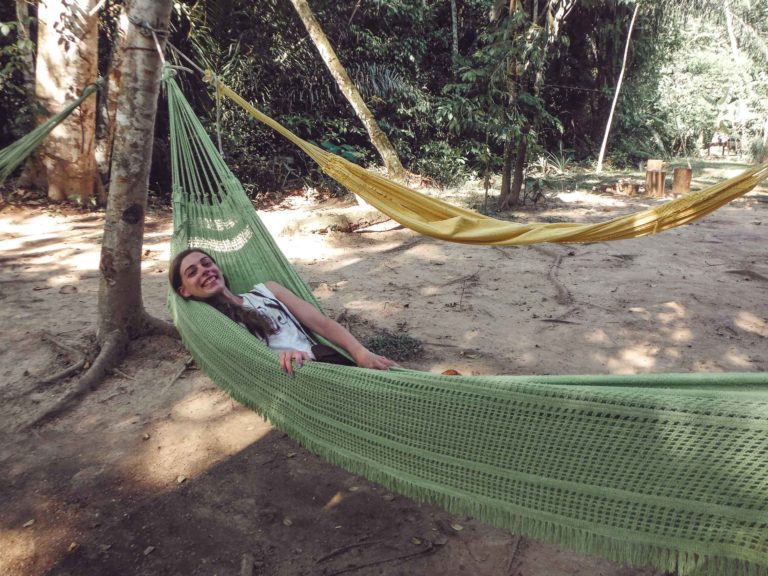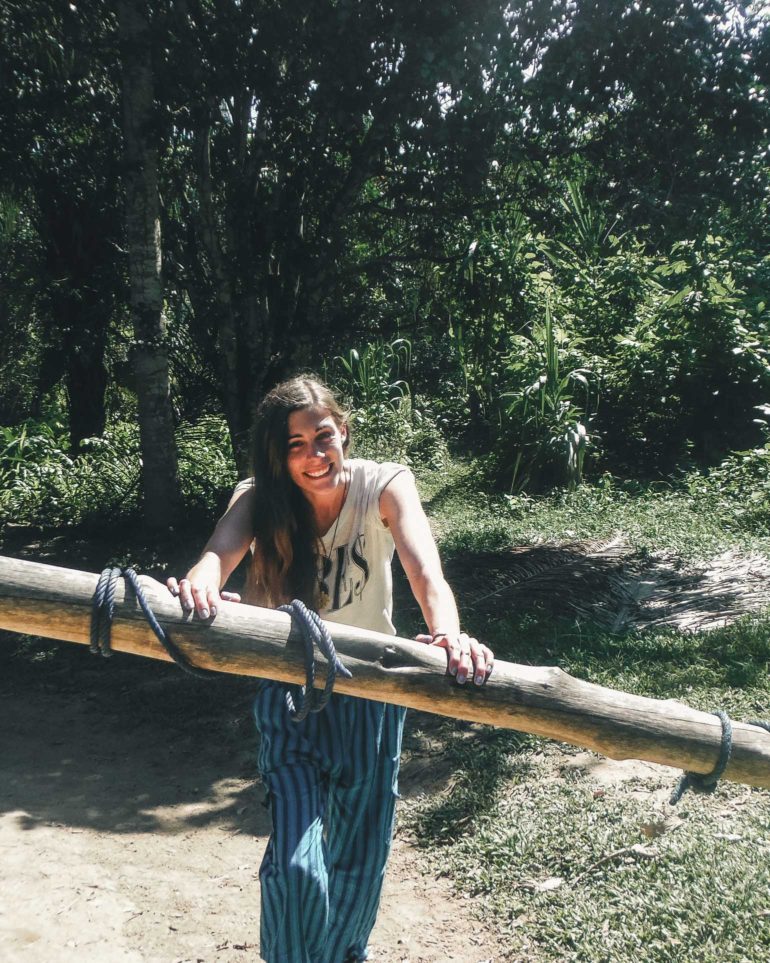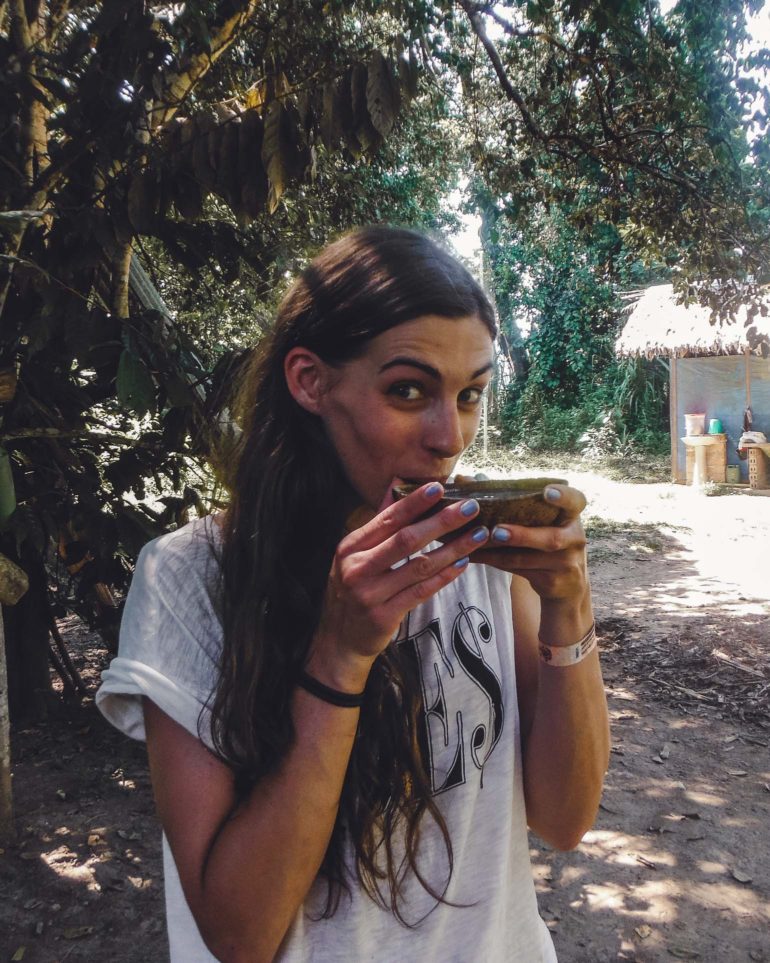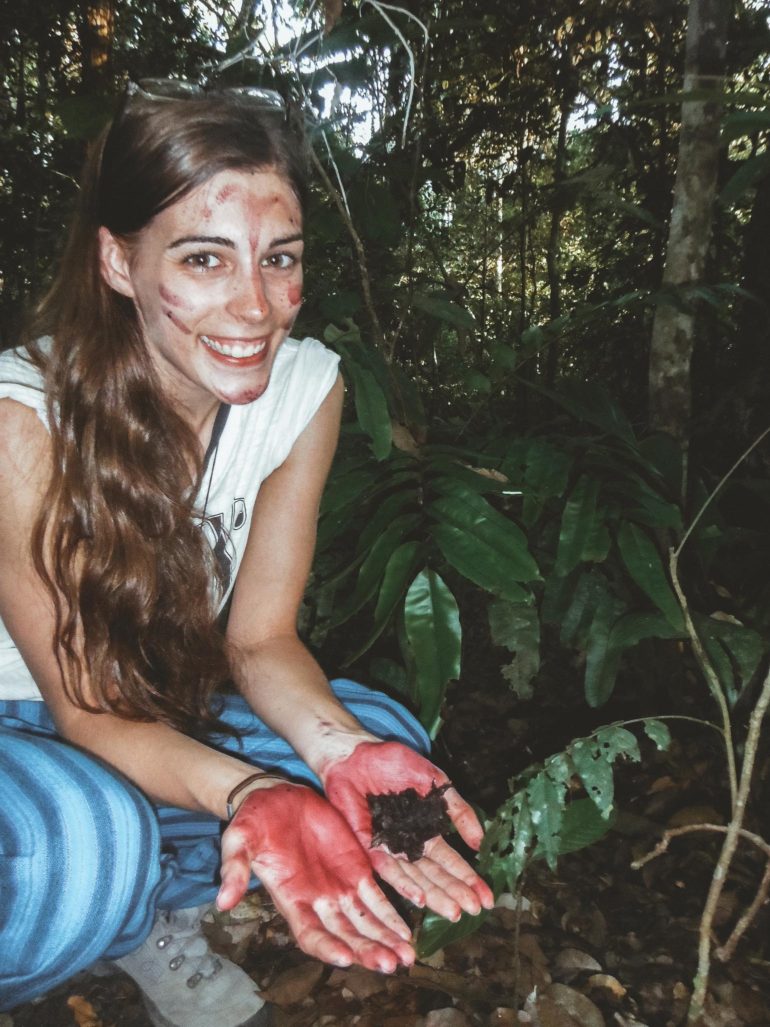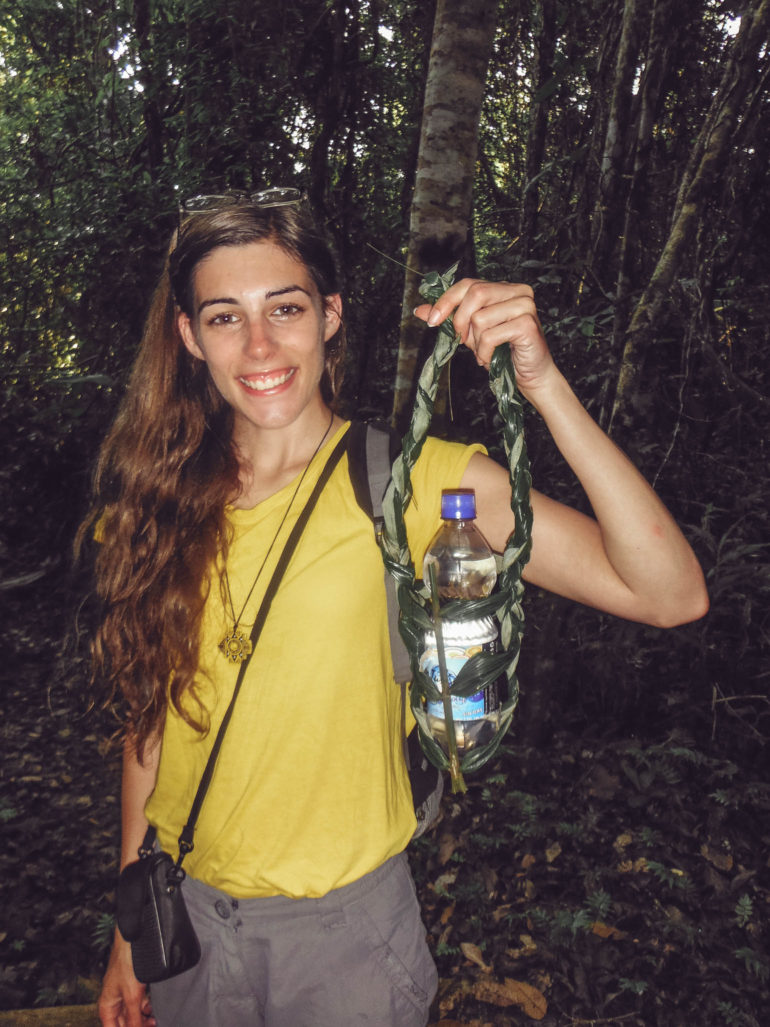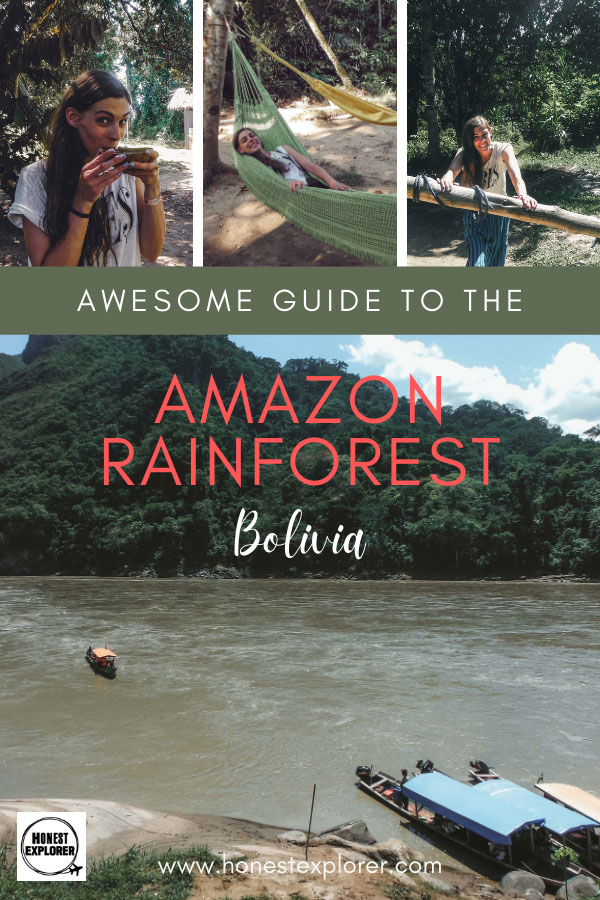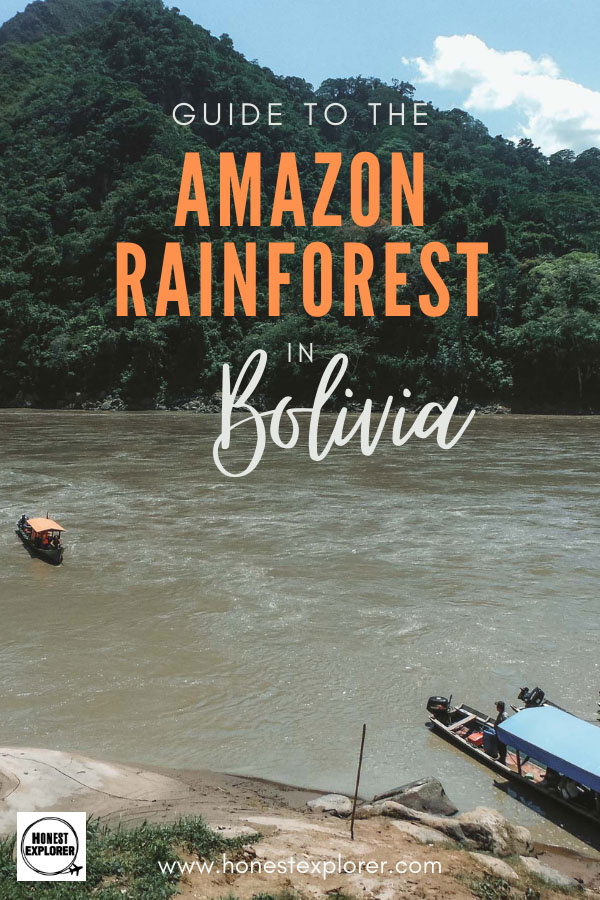For those who have always dreamt of visiting the Amazon rainforest, you have a choice of 9 different countries to visit the jungle from! The good news for travellers on a budget, is that Bolivia is a much more affordable option for Amazon trips than say neighbouring Peru or Brazil. Amazon rainforest tours in Bolivia can be significantly cheaper but still just as amazing!
Here is everything you need to know about booking an Amazon rainforest tour in Bolivia…
How to get to the Amazon rainforest tour in Bolivia
Amazon trips in Bolivia leave mostly from the small jungle town of Rurrenabaque. From here you can easily book a trip once you arrive, although to save money it is probably best to pre book your trip in La Paz.
I stayed at the Adventure Brew Hostel in La Paz (which I would recommend) and booked my Amazon rainforest tour at the tour agency within the hostel (Kanoo Tours). This made booking trips much easier and the prices for tours were really good and great quality. From La Paz, I booked the 3-day Jungle Tour, leaving from the pretty town of Rurrenabaque.
Getting from La Paz to Rurrenabaque can be done by two ways. The cheapest option is by the 30+ hour bumpy and quite dangerous bus ride for as little as $12 USD. The other, more sensible option would be to fly to Rurrenabaque. The 40-minute flight is on a tiny plane and will cost you around $99 USD. Although more expensive, it is much safer, and you get to experience flying over the mountains and rainforest and arriving at the smallest and prettiest airport ever!
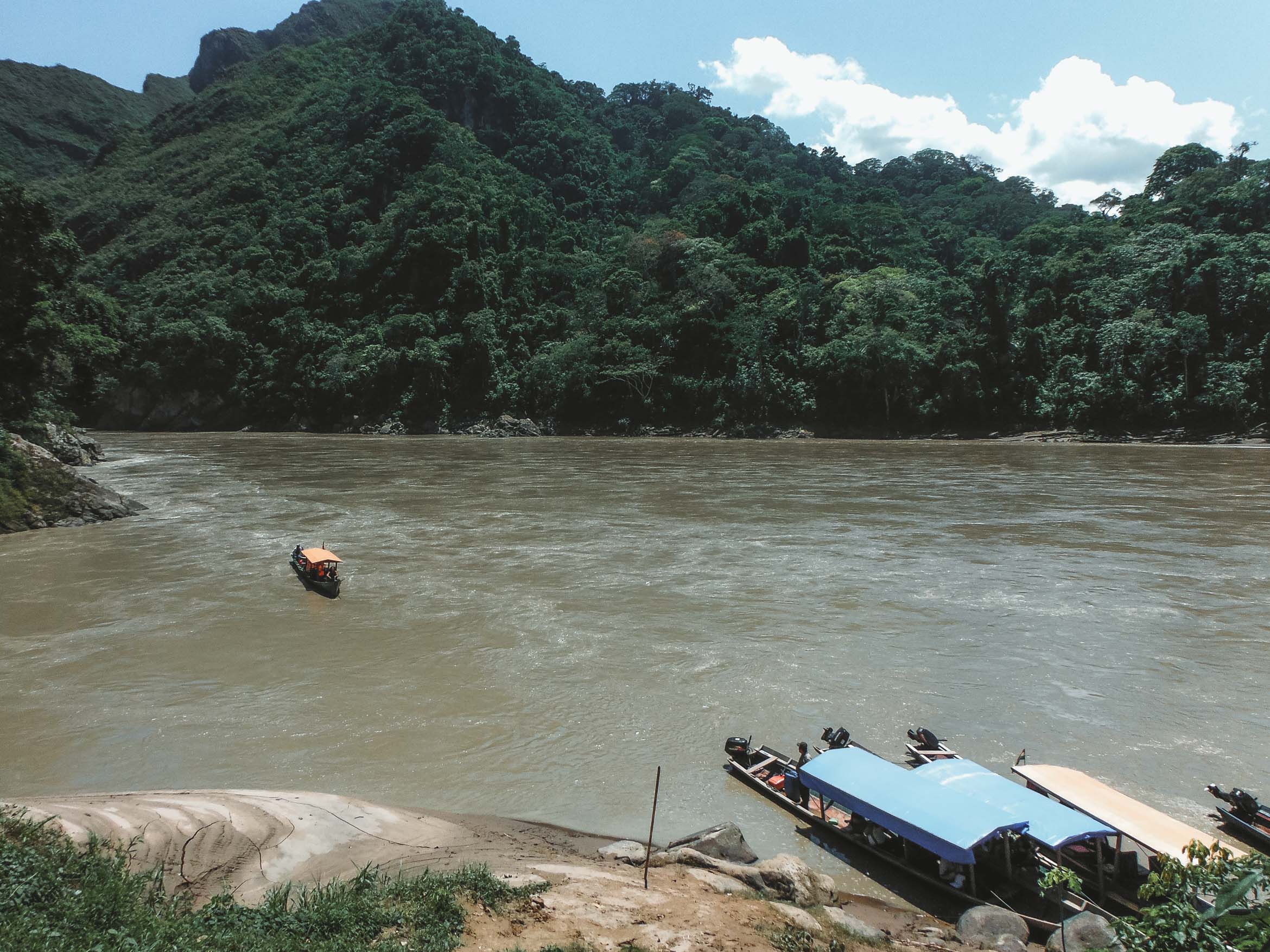
How much are the jungle tours in Bolivia?
I paid $245 USD for my 3-day tour in the Bolivian jungle. For 2-day tours most will range from $90 to $200, including pick up, transport, food and drink, as well as the activities. If a tour is under $90 to $100 USD, then it is probably best avoided. You will also need to pay around $30 USD entrance fee for the Madidi National Park.
Although a little expensive, I think for what you get these tours a great value- I mean not many can say they’ve stayed in the Amazon rainforest right?! I was really happy with my tour and the service I got and had an incredible experience.
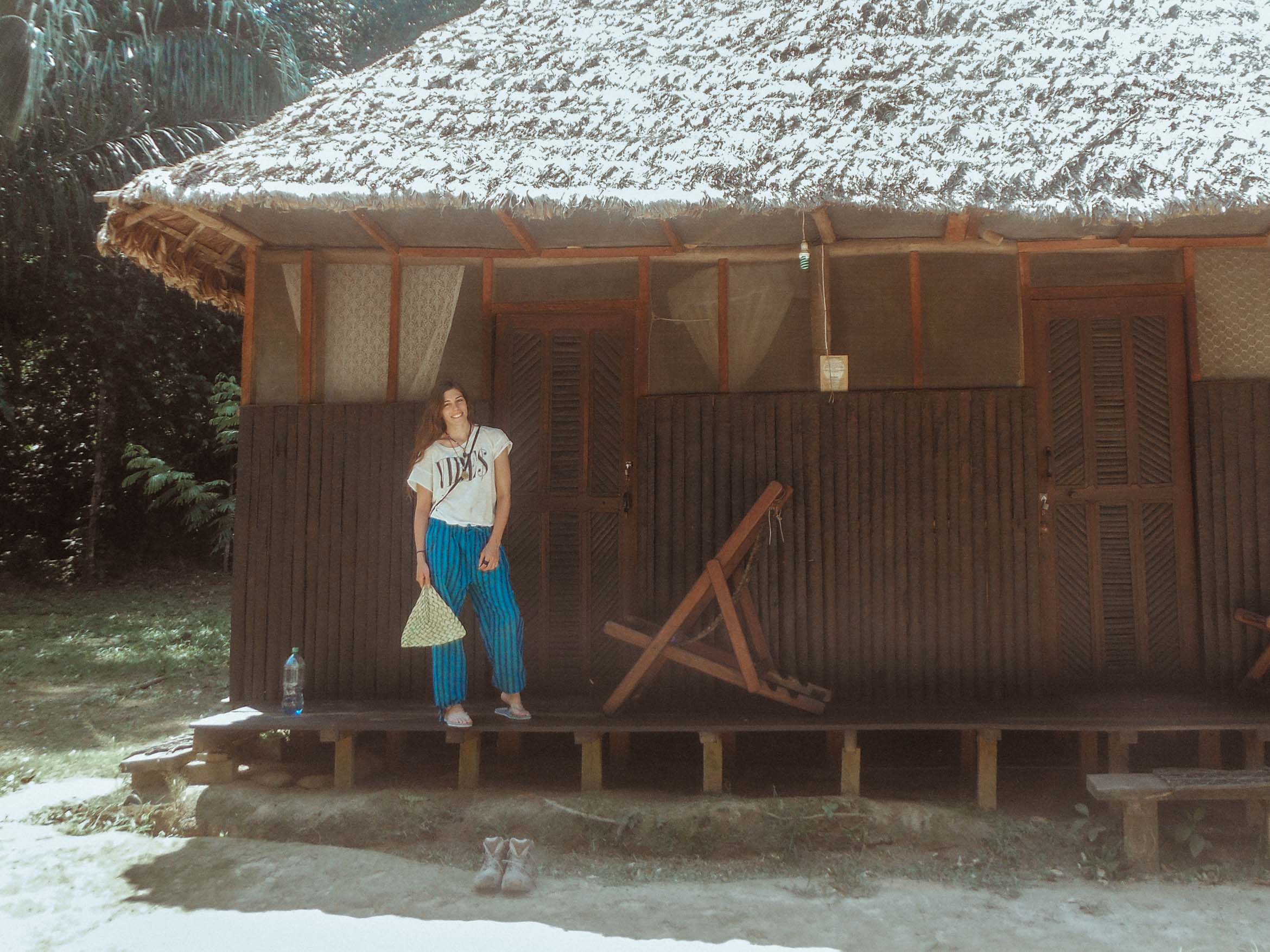
Where to stay in Rurrenabaque
Once arrived in Rurrenabaque, there are several hostels and hotels to choose from (most hostels start at around $10 USD). I stayed at the Hotel El Ambaibo. I have searched for this hostel for writing this post and it seems like it’s not on booking.com or hostelworld.com, but when I stayed, they definitely had dorm rooms, so it may be worth checking it out. I would really recommend it here, they have a HUGE pool, lovely sitting area with hammocks and a colourful toucan that comes to visit.
Types of Tour in the Amazon Rainforest
Amazon Pampas Tours
The Pampas tours will not take you deep into the jungle, but you will probably see a lot more wildlife. The Pampas is a large wetland area, on the edge of the rainforest and tours will mostly be on boats. If you are a wildlife lover, this could be a better option for you, plus, these tours are generally cheaper than the jungle tours.
Amazon Jungle Tours
These tours will take you deep into the Amazon jungle, where you will spend time trekking, learning about the plants and animals that live here. You probably will not see as much diversity of animals as in the Pampas tour; however, this is a true authentic jungle experience!
My experience of the Amazon Jungle tour…
I booked my tour thinking that there would be several others with me, however there was just 1 other couple (plus, they only stayed 1 night so I essentially had a private tour for the second and third day!). This made for a much more personal experience.
We got picked up from Rurrenabaque and taken on a boat for around 3 hours. This was quite surreal, drifting along the Amazon river, something I never though I would be able to do. My guide even spotted some howler monkeys along the way!
Eventually we stopped off at a small village along the river, where they showed us how they make sugar cane honey, or ‘miel de caña’. We got to try ourselves to make the sugar cane, using the traditional tools. And then we got to taste some of our hard work, the beautiful, sweet taste of sugar cane juice.
Continuing on the boat journey, we reached our lovely ego lodge, where they served us a refreshing fruit drink and some lunch. I was so happily surprised by my little eco hut. I thought I would have to stay with others, but I had a whole hut to myself- ahhh a backpacker’s delight! The camp was pretty quiet too, and I had the chance to relax in the hammocks and take in the sounds of the jungle.
Amazon rainforest trek
After lunch we had a jungle walk, where our guide showed us various plants and explained their uses. Some are use for medicinal purposes, some could be made into a red dye and some can be made into fans, baskets or even water carriers. I was shocked at how quickly the guide made a water bottle holder from some leaves, in just a few minutes.
Along the way, we heard (and sort of saw) a wild pig. This was actually quite scary as I know they can be a bit dangerous, but we just heard it and saw it briefly run off, which was quite exciting haha. We also saw a snake, tarantula, giant ants, parrots, and the most random insects. Basically, all the scary things! Although our guide was very knowledgeable, and I did feel very safe.
Later on, after dinner we went out again on a night walk, a quite different experience and the noises of the animals was incredible.
Breakfast at the Eco lodge
I woke up to a delicious breakfast of fresh (and juicy) tropical fruit, as well as this sweet cake type thing which was so yummy. Unfortunately, I became a little ill with food poisoning (something I had off and on for most of my time in South America- Boo!). Anyways, my guide was so kind and made me this traditional tea, full of medicinal plants. I have no idea what was in it, and it was a dark black colour, but he said it would make me feel better, and to my surprise it did quite a bit!
After breakfast we went on another jungle walk, before we got to learn about the local Tacana culture by taking part on some workshops making fans from leaves and carving out our own ring made of wood. There was also some archery you could take part in too, where they teach you how to use the bow and arrow for hunting.

Fishing for Piranhas
I have never been one to get excited about fishing but when you are told you will be fishing for piranhas; it somehow makes it a little more exciting. The other couple had left the tour by now, so me and my guide went to a smaller part of the river, where he taught me how they fish.
And what were we fishing for? Piranhas! Yes, those fish with the sharp teeth- eek! I did not manage to catch one, but I think I got close! Never mind, it was still a unique experience.
This was the last day, and there was a hike up to the nesting place of the parrots and overlooking the jungle from above. However, I was not feeling great so gave this a miss. My guide took my camera up for me and took some pictures so I could see, bless him.
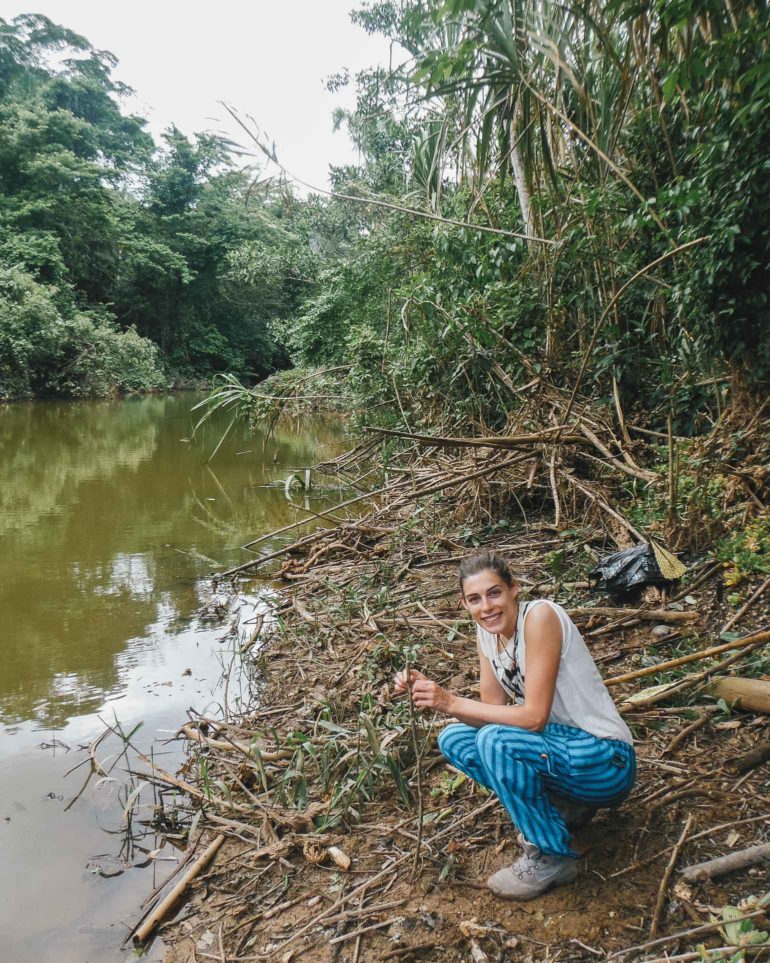
Back on the boat I was not feeling great so could not do the raft making (so annoyed about his). There was another tour group who joined the boat, and I watched them making a raft (kind of like what you do at brownie camp) and then float on it down the Amazon river. It did look amazing. Although I did get to watch from lying in a hammock that was on the boat!
When you arrive back, they will drive you back into the town of Rurrenabaque.
Best time to be visiting the Amazon rainforest in Bolivia
The best time to visit the Bolivian Amazon is from October to May, which is the dry season. I visited in early November and had great weather. If you are travelling outside the dry season, be sure to bring a lot of waterproof clothing and shoes!
Packing for the Amazon Rainforest
The first thing I would suggest is DEET!!!!! I would recommend using a good amount of insect repellent here, I basically caked myself in it and only came out the jungle with 2 mossie bites. I would say use one with a minimum of 50% DEET (Repel and Jungle Formula are both great brands).
For clothing, definitely bring some long trousers, hiking trousers are great, as well as good hiking boots. I know its hot and the last thing you would think to wear are big hiking boots, but they will stop the mossies from getting you, and believe me, there are so many in the jungle. Long, loose clothing is best for the treks, and maybe some t-shirt and shorts for walking around camp.
Other items would be any snacks or specific foods you like or need due to dietary requirements, sunscreen is always a must, water, swimwear, hat, waterproof jacket (just in case), sandals for use around camp and a head torch in case you need the toilet in the middle of the night.
*For the snacks I would recommend giving them to your guide to put into the kitchen area. I forgot to do this and woke up to a rustling in my room- not sure what it was but it made holes in my pack of biscuits- oh dear.
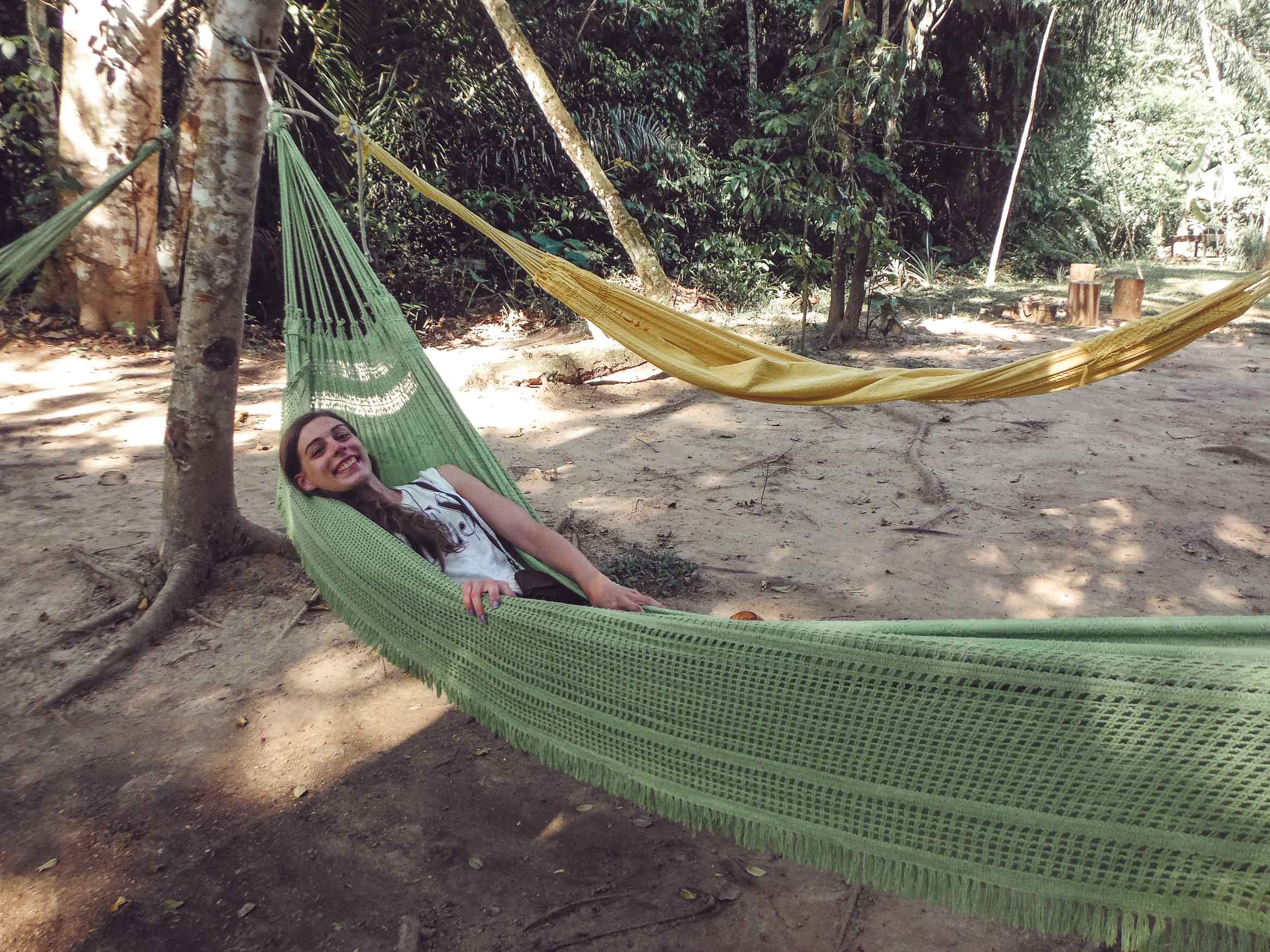
My Bolivia rainforest tour was such an amazing experience and remember, visiting the Amazon rainforest in Bolivia can be a much more affordable way to see the jungle.
Hope you enjoyed this post on visiting the Amazon rainforest in Bolivia; any questions just ask below or use the contact me form.
More posts from Bolivia:

